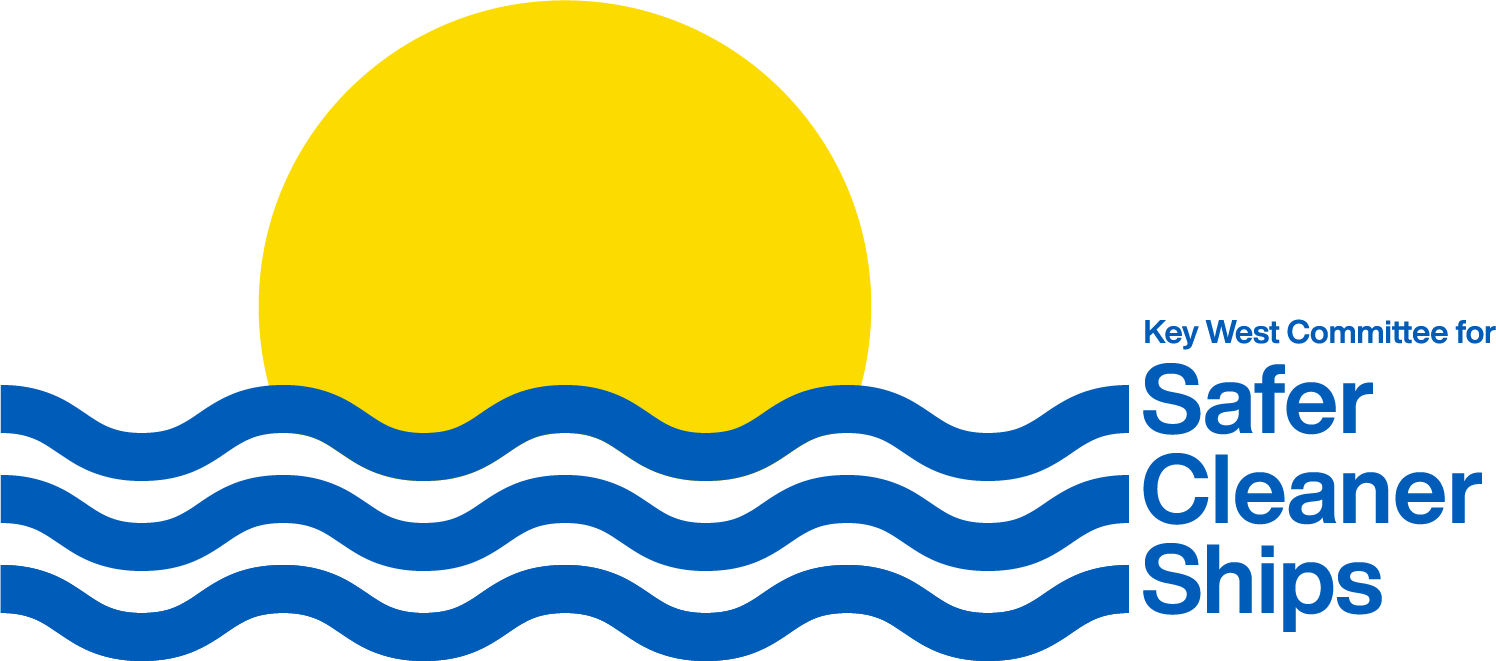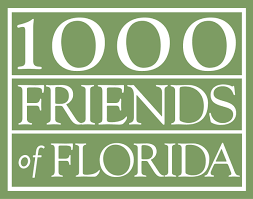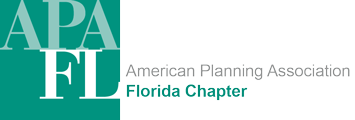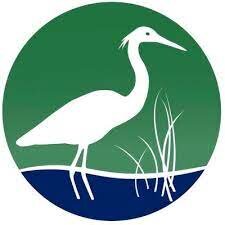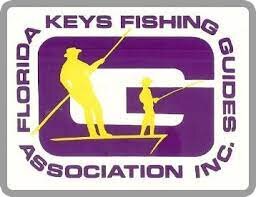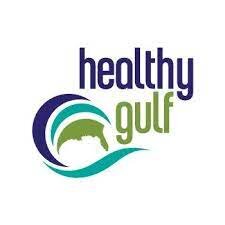24 Environmental Groups ask Gov. DeSantis to Stop Seaport Preemption
Following the Monroe County Commission's unanimous vote to support the three referendums passed by Key West voters and an endorsement from the Editorial Board of the Miami Herald, a coalition of 24 leading environmental organizations and Florida Keys' property owners' associations have published an open letter to Governor Ron DeSantis, calling on him to help stop legislation that would overturn the vote and force Key West to accept large cruise ships. Read the full letter below
March 22, 2021
The Honorable Ron DeSantis
Governor, State of Florida
The Capitol
400 South Monroe Street
Tallahassee, FL 32399
Subject: Oppose Preemption of Ports
Dear Governor DeSantis:
On behalf of the undersigned organizations, we respectfully request that you oppose any efforts to strip Florida’s communities of the ability to manage their local ports. “State Preemption of Seaport Regulations” (SB 426/HB 267) seeks to implement an overbroad and unnecessary statewide preemption in response to a single community’s recent referenda. Specifically, these bills target the deliberative and democratic efforts of the voters of Key West to protect public and ecological health by restricting the size and scale of cruise ships utilizing their municipally owned port.
The Florida Keys are home to the world's third-largest barrier reef and an ecosystem so fragile that it is designated a State Area of Critical Concern. Key West is the only cruise port in the world with a relatively shallow and narrow main channel in such close proximity to coral reef ecosystem habitats. The ship channel runs directly through the Florida Keys National Marine Sanctuary and in the immediate vicinity of some of the most sensitive ecological preserves in the hemisphere, including the Key West National Wildlife Refuge; Sanctuary Preservation Areas including Sand Key, Rock Key, and Western Sambo; and Western Dry Rocks, which was granted new protections by the Florida Fish and Wildlife Conservation Commission just this year.
On January 30th, you unveiled Florida’s Coral Reef, a new awareness campaign and website created by the Florida Department of Environmental Protection and twenty-five partner organizations, including NOAA, Florida State Parks, the Coral Restoration Foundation, and others. The coalition correctly notes that Florida’s coral reefs are a “delicately balanced and interconnected community” and that “without continued bold and aggressive action, we may lose critical functions and benefits of the reefs.” In addition to storm protection, recreation, and wildlife habitat, one of those many benefits is undoubtedly economic. Coral reefs in southeast Florida have an asset value of $8.5 billion, generating $4.4 billion in local sales, $2 billion in local income, and 70,400 full and part-time jobs.
Florida’s unique and irreplaceable environment is the driver for the state’s tourism economy and the reason why so many choose to make this great state home. Our local governments have the opportunity to help protect these ecological treasures, if we let them lead. We respectfully request that you oppose any efforts to preempt local control of ports, and stand for home rule and the protection of Florida’s imperiled coral reefs.
Sincerely,
Evan Haskell | President
Key West Committee for Safer, Cleaner Ships
Paul Owens | President
1000 Friends of Florida
Lester Abberger | Legislative Advocate
American Planning Association Florida Chapter
Kent L. Wimmer | Senior Representative
Defenders of Wildlife
Jonathan Webber | Deputy Director
Florida Conservation Voters
Barry Wray | Executive Director
Florida Keys Environmental Coalition
Steve Friedman | Commodore
Florida Keys Fishing Guides Association
Preston Robertson | President and CEO
Florida Wildlife Federation, Inc.
Marcie Keever | Oceans & Vessels Program Director
Friends of the Earth
Eve Samples | Executive Director
Friends of the Everglades
John Hocevar | Oceans Campaign Director
Greenpeace USA
Christian Wagley | Coastal Organizer
Healthy Gulf
Dorothy Moses | President
Island of Key Largo Federation of Homeowner Associations
D. A. Aldridge | President
Last Stand of the Florida Keys
Andrew Tipler | President
Lower Keys Guides Association
Jon Paul "J.P." Brooker | Director, Florida Conservation
Ocean Conservancy
Mill McCleary | Executive Program Director
Reef Relief
David Godfrey | Executive Director
Sea Turtle Conservancy
Deborah Foote | Acting Chapter Director
Sierra Club Florida
Kendra Ulrich | Shipping Campaigns Director
Stand.earth
Holly Parker Curry | Florida Policy Manager
Surfrider Foundation
Stuart Schaffer | President
Sugarloaf Shores Property Owners Association
Samantha Gentrup | Executive Director
Suncoast Waterkeeper
Jen Lomberk, Esq. | Chair
Waterkeepers Florida
Economic Impacts: Florida Seaports and Cruise Ships at the Port Key West
The total economic value of the marine cargo and vessel activity at Florida seaports, including the revenue and value added at each stage of moving an export to the ports or an import from the marine terminals, is estimated at nearly $117.6 billion.[1]
Statewide cargo activities account for nearly 90% of the total economic impact of Florida seaports figure.
Statewide cruise ship activities account for 6% of the total economic impact of Florida Seaports.
Total economic output of the Port of Key West is less than 1/10th of 1% of all economic activity at Florida’s sea ports.
Key West has already replaced the cruise ship revenues lost as a result of the CDC No-Sail Order, with sales tax revenues for September–December 2020 higher than the same period one year ago.
The Port of Key West accounts for less than 1/10th of 1% of the total economic output of Florida's Seaports.
Port of Key West Total Economic Output: $85,000,000
All Florida Seaports non-cruise/non-cargo output: $5,400,000,000
All Florida Seaports Total CRUISE Output: $7,167,274,000
All Florida Seaports: Total CARGO Output: $105,009,300,000
All Florida Seaports: Total Economic Output: $117,600,000,000
[1] “The Statewide Economic Impacts Of Florida Seaports,” Executive Summary, Florida Ports Council, December 2016. http://scdn.flaports.org/wp-content/uploads/EconomicImpactsofFloridaSeaportsExecutiveSummary.pdf
🛳️ Key Findings from The Murray Report
In 2005, the City of Key West and the US Navy commissioned a comprehensive assessment on the impacts of the cruise ship industry in Key West.[1] Known as the Murray Report, it devotes 110 pages to the impact of cruise ships on the marine environment, drawing upon decades worth of scientific findings from more than 100 previous studies. Key conclusions are as follows:
1. THE PORT OF KEY WEST HAS UNIQUE PHYSICAL AND ENVIRONMENTAL CHARACTERISTICS. IT SUPPORTS PROTECTED SPECIES AND ECONOMICALLY IMPORTANT FISHERIES.
The Murray report explains why cruise ships pose a greater threat to Key West’s natural environment and its marine-environment-based economy than they do in other cruise ports. “Although a number of other ports in the U.S. (including Alaska and Hawaii), Bermuda, Mexico, and the wider Caribbean have addressed or are addressing many similar environmental issues related to cruise ships, including adequate harbor depths and infrastructure, and potential environmental degradation, this review deals mainly with activities of cruise ships and other large vessels in Key West. The situation in Key West appears to be unique in that a relatively shallow and narrow main channel and harbor (relative to vessel size) exist in close proximity to coral reef ecosystem habitats and communities that depend on clean, clear water.” “General categories of these habitats include coral reefs (bank or platform margin reefs and patch reefs) hardbottom, seagrass, and bare or lightly vegetated substrates.” “They are known to support important and economically valuable commercial and recreational fisheries and provide diving sites for a thriving dive industry around Key West.” “Natural habitats and productive benthic communities surround the dredged channel and harbor used by cruise ships.
Key West's ship channel crosses the Great Florida Reef Tract and the Florida Keys National Marine Sanctuary. It is approximately 6 miles long, with an average width of 300’. Although it has a controlling depth of 34’, live coral formations on either side of the channel rise to a depth of only 16’ or less. Cruise ships transiting the channel in recent years are as large as 1046’ in length and 130’ in width, with a draft of 28.5’.
These areas “provide habitat for a myriad of fishes, shrimps, crabs, and other species, and therefore have been designated as Essential Fish Habitat (EFH) by the South Atlantic Fisheries Management Council.” “Much of the area adjacent to the Key West channel and harbor, and particularly in Hawk Channel, includes patch reefs and hardbottom. Designated also for some species or species groups within EFH are Habitat Areas of Particular Concern (HAPC). HAPCs either play critical roles in the life history (e.g., spawning, feeding) of federally managed species or are those areas vulnerable to degradation from fishing or other human activities.” “HAPCs for queen conch exist in two areas near Key West, the hard bottom adjacent to the main channel, and off Fort Taylor and Boca Chica. Of the estimated 28,000 conch in the spawning stock from Eastern Dry Rocks to Looe Key during 2001, about 18,000 were found in the region extending from Eastern Dry Rocks to Eastern Sambo. This region, by far, represents the greatest reproductive output of Florida’s queen conch population, and any impacts, particularly elevated turbidity, could impact planktonic larvae and newly settled individuals. The southern portion of the channel intersects this area. In addition, juvenile and non-reproducing adult conch are common in hardbottom along the oceanside of Key West and on the west side of harbor (Navy 2003).”
Murray identifies a number of “species listed by the State as warranting protection that may use the channel and harbor or immediately adjacent marine area, and that may be affected by cruise ship activity.” These include protected, threatened, and endangered marine and avian species such as loggerhead, green, and hawksbill turtles; manatees, brown pelican, black skimmer, least tern, roseate tern, osprey, and pillar coral.’’
Murray also explains the connection between the marine environment and the local economy. “The high quality of recreational and commercial fishing in the Key West area is world renowned with a seemingly unlimited variety of species available for sport or harvest. These historic Keys and Key West industries significantly generate thousands of jobs in communities and tens of millions of dollars in income.” In particular, Murray emphasizes the commercial and recreational fisheries for spiny lobster, stone crab, snapper, and grouper, and the “adverse economic impacts resulting from the use of the Outer Mole and other cruise ship activity in Key West.”
2. CRUISE SHIPS IN KEY WEST’S NARROW, SHALLOW SHIP CHANNEL ARE DIRECTLY RESPONSIBLE FOR HIGH TURBIDITY LEVELS THAT ARE LETHAL TO SEA LIFE.
Section 3.B.2 of the Murray Report examines the impacts of turbidity and sedimentation on the marine environment, explaining that “along with phosphorus, turbidity is considered probably the second most important determinant of ecosystem health in the Florida Keys (Jones and Boyer 2002).” “Optimal coral survival, growth and recruitment occurs under low nutrient and low turbidity conditions, although coral decline in the Keys is considered to be a result of multiple stressors (Cook et al. 2002). Lower skeletal deposition of calcium carbonate in experimental transplants of hard corals into nearshore waters has been attributed to higher turbidity levels. Turbidity and water temperature have been described as major characteristics of nearshore waters that negatively affect corals on the Florida Reef Tract (Cook et al. 2002).”
“Measuring turbidity is in this case a surrogate for measuring sediment (silt, sand, rubble, organic matter, etc.) scoured off the bottom by vessel propeller generated turbulence and evidently by displacement pressure waves moving along the bottom. Simply, in waters 30+ feet deep, the level of turbidity measured in the upper water column is a function of what is happening to the bottom when a large vessel close to the bottom moves along or is turning…In these situations, larger particle sizes when redistributed in heavy loads can result in the greatest consequence for colonized or vegetated benthic habitats. Sediment resuspension apparently occurs in two ways – directly from propeller and thruster wash and turbulence, the other is the little addressed phenomena of surge waves moving laterally away from a large displacement vessel that resuspend sediment closer to the bottom.”
Murray acknowledges naturally occurring turbidity and isolates ship-generated turbidity as a remediable man-made problem. “It is acknowledged that high winds and storms result in naturally occurring resuspended sediment and water column turbidity.” “Turbidity levels were approximately three to four times higher during windy conditions than during the selected calm weather period (USACE 2003).” “Natural processes that result in large scale disturbance in Keys waters are episodic, often with long intervals between events.”
Royal Caribbean's Grandeur of the Seas disturbs bottom sediment while approaching the Port of Key West in October 2005. Cruise ships calling on Key West in recent years are much larger than Grandeur of the Seas. The average displacement of cruise ships calling on Key West has increased 30% since 2005; maximum ship size has increased 45% since that time.
“The growing number, size, and draft of recreational and commercial vessels now using Keys waters, such as Key West channel and harbor, are creating turbid conditions considered to be chronic in places. Vessel generated resuspended sediments is a growing concern in areas with high boat traffic, including open waters. Turbidity reduces water clarity, which reduces sunlight penetration through the water column (which can adversely affect the growth of submerged vegetation (Kruczynski and McManus 2002).”
“Presence of these resuspended sediments in the water column, as indicated by turbidity can interfere with feeding/respiration by aquatic organisms (FDEP 2005). Light levels are also reduced, which affects the health of seagrasses and corals as light extinction is directly related to water turbidity (Jones and Boyer 2002). Resuspended sediment and turbidity could also affect hard-bottom communities by smothering (Kruczynski and McManus 2002).”
“Lethal effects were known to result from excessively high sediment loads or high sedimentation that took place in a short period of time. More subtle lethal effects that can eliminate native species may occur at low but chronic sediment loads or sedimentation with long exposure. Under these conditions risks may exist to any life history stage, behavioral activity, reproductive ability, or metabolic function and result in decreased viability of any number of marine species in the vicinity of chronic resuspended sediment. (Sherk 1971)”
“Data and other available information indicate that impacts from cruise ship and other large deep draft vessels are occurring to water quality and benthic habitats in the area of the main channel and harbor in Key West. Bottom scouring, severe sediment resuspension and redistribution, plume turbidity far above background levels, interference with historic diving and fishing activities, and bottom excavation in the cruise ship anchorage are resulting from the passage of these vessels. State and federal laws and regulations related to the maintenance of water quality, protection of bottom habitats in the area, and protection of publicly owned submerged lands may be violated when these severe events occur. The fact that cruise ships and other large vessels resuspend bottom sediment in Key West channel and harbor and in the offshore anchorage and elevate turbidity levels in the water column is undisputed.”
“On March, 1, 1999, the DEP and the FKNMS measured turbidity in the wake of a cruise ship at the Outer Mole at nearly 20 times above background. The same day in the anchorage just west of Marker “9” (see Section 3.B.9) they measured turbidity at 7 locations within a plume from the Enchantment of the Seas that averaged 30 times the background average values of 3.7 NTU(FDEP 1999a). On March 3, 1999, FDEP monitoring of plumes created by cruise ship movement at the Outer Mole showed levels on average 11 times over background with many samples more than 29 NTUs (Class III standards) above background. Measurements in plumes offshore the same day showed levels as high as 193 NTUs while background levels were near 3 NTU (FDEP 1999b). On March 11, 1999 numerous measurements at the Outer Mole by FDEP (in plumes from cruise ships and tugboats) showed background levels averaging about 3 NTU and plume levels averaging nearly 50 NTU (FDEP 1999c).”
“Cruise ship traffic has been documented to create turbidity plumes during transit between the outer sea buoy and the docks in the harbor, a passage that is typically an hour long (Figure 3.B.8). In 2000 the FKNMS reported that there is evidence of a turbidity problem relative to movements of large vessels in the Key West area. Evidence included measurements of turbidity created by ship main engines and thrusters during docking maneuvers, visual observations of cruise ship-generated turbidity plumes and visual observations of seagrass and bottom damage from anchoring. The FKNMS also reports that measurements of ship-generated turbidity are orders of magnitude greater than measurements of background turbidity, and that these turbidity events last from one to several hours.”
“Turbidity levels have heavily impacted corals adjacent to the harbor and ship channel, especially to the west. Ship generated turbidity is clearly differentiated and distinguished from natural background turbidity.” (FKNMS 2003b). “In 2002, the FKNMS reported to the Large Vessel Working Group that ‘large plumes of resuspended sediment are observed with each pass of a cruise ship or other large deep draft vessel in and out of the channel, particularly on low tide. Turbidity levels observed with docking cruise ships greatly exceed state water quality standards and local fishermen observe and report the direct effect of turbidity plumes on the fish they are targeting.’ (FKNMS 2002).” “Ship generated turbidity is an added stressor to natural systems above and beyond the background and storm event turbidity impacts.”
3. CRUISE SHIPS HAVE GOTTEN MUCH LARGER SINCE THE MURRAY REPORT
Turbidity generated by large vessels is a function of how much water is displaced by the vessel, and displacement roughly correlates to a vessel’s gross ton weight. Compared to 2005, cruise ships calling at Key West today are 30% larger on average, while the largest ships today are 45% larger.
[1] “THE IMPACTS OF THE CRUISE SHIP INDUSTRY ON THE QUALITY OF LIFE IN KEY WEST”; RFQ No. 04-001; City of Key West Naval Properties Local Redevelopment Authority, Thomas J. Murray & Assocs. October 2005. Click here for full report.
✍️ Ask Rep. Mooney to Protect the Keys
Florida Keys, we need your help:
You’ve probably heard about SB 426, the draft bill in the Florida Senate that would seize control of local seaports across Florida and give it to an unidentified government agency in Tallahassee as a ham-handed way to cancel Key West’s vote for smaller cruise ships.
There is also a companion bill in the Florida House of Representatives, House Bill 267. Our local Florida Keys delegate to the House is Representative Jim Mooney. We need to let Rep. Mooney know where the Keys stand on this ill-timed effort to transfer local control over our vital port economy to Tallahassee. Please write Rep. Mooney today. Ask him to oppose this bill and protect home rule in the Florida Keys.
Click the button below for a pre-formatted letter to Rep. Mooney. Please take a few minutes to add a sentence or two to introduce yourself and personalize the letter, and be sure to add your full name and local address at the bottom.
We are calling on Rep. Mooney to:
Oppose HB 267
Speak out publicly against efforts to reverse the will of Key West voters.
Encourage his colleagues in the Florida House to oppose HB 267
Local voters made a well-informed decision to adjust the business model of our tourist economy. We've gone almost a full year now without cruise ships, and the Keys economy is one of the strongest in Florida. We have the state's 3rd-lowest unemployment rate; and for the past four months, local sales tax and bed tax revenues are both higher than they were before the pandemic. In short, the Florida Keys are the economic envy of the state. Now is not the time for a big government takeover of our ports. We must preserve home rule and protect the Florida Keys.
Contact for Representative Jim Mooney:
Mail:
Representative Jim Mooney
1102 The Capitol
402 South Monroe Street
Tallahassee, FL 32399-1300
Phone:
(850) 717-5120
Email:
jim.mooney@myfloridahouse.gov
Coalition Blasts Controversial Bill to Limit Port Freedom & Remove Local Protections
FL House Committee Plans to Hear Controversial Legislation Wed, Mar. 3rd
[March 1, 2021] On the eve of Florida’s legislative session kicking off in Tallahassee and ahead of a House of Representatives Committee meeting Wednesday, a coalition of port leaders and environmental advocates are calling on Tampa Bay area Senator Jim Boyd (R - Bradenton) to withdraw a controversial bill he authored which threatens to destabilize the commercial operations at local ports and remove environmental protections that currently protect the delicate ecosystem in Florida cities and counties.
Boyd’s legislation (SB 426) could VOID any and all established local policies interpreted as “limiting commerce” in Florida’s 15 seaports. Currently the bill is scheduled to be heard by a Florida House of Representatives Committee this Wednesday, March 3rd.
Florida Association of Counties President Melissa McKinlay (Palm Beach County) said, “This potential legislation should be a concern for every county surrounding our state’s 15 seaports. If our ports cannot make decisions locally about the size of vessels and type of cargo allowed to enter their area, then our ports cannot protect the economic and environmental interests of their communities. Florida is beautiful because we balance our natural interests with our economic interests. This balance would be destroyed if the control of seaports was removed from the local port/county level that best understands local needs.”
Pensacola Port Director Amy Miller said, “Pensacola remains vehemently opposed to SB 426, which strips all Florida ports of their ability to regulate commerce beyond physical limitations. For example, we do not allow vessels carrying highly flammable or explosive cargo. We are not prohibited from handling such vessels by the US Coast Guard or any other state or federal regulatory authority. We are not prohibited from handling such vessels because of the type or size of the vessel. We simply do not think those types of cargoes are something we want to handle in the middle of downtown Pensacola. This proposed legislation would remove our ability to protect our port and that’s why we oppose it.”
Friends of Everglades Executive Director Eve Samples said, “This shortsighted legislation poses a direct threat to Florida's environment by robbing citizens of the ability to protect waterfronts in their own communities. The bill would strip decision-making authority from local counties and ports, including the ability to protect shorelines and water quality. If this legislation is approved, Floridians may have to lobby the state Legislature any time we want to strengthen protections at ports. Florida's environment is a major economic engine. We should be strengthening environmental safeguards in the state, not eroding them.”
Arlo Haskell, “Committee for Safer, Cleaner Ships” treasurer and “Coalition of Florida Ports for Economic Independence” founder, said, “We are warning Tampa Bay area residents that Senator Boyd’s legislation could do untold harm to their environment and their economy if their local port authorities are no longer allowed to decide how best to protect their own natural resources. Florida’s tourist economy depends on healthy coastlines. Property tax revenues depend on people wanting to own homes in beautiful places. This bill would ensure that no local port can protect their own environmental or economic interests. Instead, the control of all of Florida’s 15 seaports would be turned over to an unnamed one-size-fits-all government entity at the state or federal level. That is a real threat to the beauty of Tampa Bay. It is our hope Sen. Boyd withdraws this controversial bill.”
Florida Policy Manager of the Surfrider Foundation Holly Parker Curry said, “Florida’s coastal communities are as unique and diverse as the ecosystems they rely on. In November, the citizens of Key West voted to protect public and ecological health by restricting large-scale cruise ships in their local port. Taking additional precautions to protect coral reefs and coastal ecosystems isn’t surprising; after all, Key West’s economy and quality of life are inextricably tied to the health and sustainability of their natural resources. Unfortunately, the Florida Legislature is now considering preempting all local control of ports. This short-sighted effort would stifle local communities and lead to a one-size-fits-none statewide preemption.”
Our Economy Without Cruise Ships
Key West has gone almost a full year without cruise ships, which were halted worldwide by the CDC No Sail Order on March 15, 2020. As we approach the one-year anniversary, the Safer, Cleaner Ships research team has been studying the local economic indicators to better understand how our economy is faring without cruise ships. Here’s what we’ve found:
HOTEL & LODGING
Total hotel bed taxes for September–December 2020 exceed the same period for 2019 throughout the Florida Keys. (Monroe County Tax Collector’s Office)
For all of 2020, Florida Keys and Key West have the highest hotel occupancy rates and room rates in the state. (Source: Smith Travel Research Monthly District & Tier Overview Report; see page 9 & 10)
For March 2021, Key West has the highest hotel occupancy rate in the US. (Source: Amadeus Hospitality Report)
TOTAL SPENDING
Total sales tax revenue for September–November 2020 exceed the same period for 2019 throughout the Florida Keys (Source: Florida Sales Tax Return Data, Monroe County)
Total sales tax and parking revenues for September–December 2020 exceed the same period for 2019 in the City of Key West. (Source: City of Key West Finance Department.)
EMPLOYMENT
As of December 2020, the unemployment rate in the Florida Keys (Monroe County) is 2.6% — tied for the lowest UE rate in Florida and among the lowest in the U.S. (Source: FL Dept of Economic Opportunity).
BUSINESS AT THE PORT OF KEY WEST
For June–December 2020, many businesses at the Historic Key West Bight, part of the Port of Key West, had monthly sales higher than 2019, including bars and restaurants and watersports and dive companies. (Source: City of Key West Finance Department)
City of Key West Finance Director Mark Finigan reports: "Major Key West Bight tenants and the attractions based commercial tenants are doing as well as pre pandemic numbers (or better in certain cases)." (Source: Finance Director memo to City Commission)
For October 2020–January 2021, fuel sales at Key West Bight are 8% higher than the same period last year. For the month of January, fuel sales are up 25%, transient dockage is up 4%, and dinghy dockage is up 14%. Ports Director Doug Bradshaw reports: “Marina is full and we are predicting that it will stay that way towards April.” (Source: January Monthly Report for Key West Historic Seaport)
Ask Senator Rodriguez to Defend Home Rule
We are working hard to defeat Senate Bill 426. And we need your help.
SB 426 is the draft bill that would seize local power to regulate local ports and deliver that power entirely to Tallahassee. It would not only overturn the decision by Key West voters to place common-sense limits on cruise ships, but would also end home rule in our 15 sister ports throughout the state.
If this bill passes, decades of local rule-making that protect local interests will be wiped off the books in favor of big-government bureaucracy. Entire port master plans will be thrown out the window. The great history and maritime traditions of Key West, Pensacola, Jacksonville, and other ports will be threatened as unique policies tailored to Florida’s unique coastlines are replaced by a one-size-fits-all approach.
The bill has been assigned to the Transportation Committee, where our local delegate, Senator Ana Maria Rodriguez has an important seat. We need at least 4 senators on this committee to tell the committee Chair that they cannot vote for SB 426. Our Senator has the potential to be Key West’s strongest ally, but we need your help to secure her support.
Senator Rodriguez needs to hear from more of her constituents, like you, who support the amendments and who feel that these sensible limits on cruise ships must be allowed to stand. She needs to hear how her voters see SB 426 as a gross example of big government overreach.
Please take a few minutes to write or call Senator Rodriguez, to respectfully tell her in your own words why you think local ports should remain under local control. We see Senator Rodriguez as our friend on this issue and we hope you do too.
We want to keep SB 426 from ever appearing on the agenda, and we think Senator Rodriguez will play a crucial role. If she makes it clear that she cannot support it, we think we can kill this bill.
Contact info for Senator Rodriguez is below. We hope you can help. If you can copy us on your email to her (info@safercleanerships.com), that would help us keep track of who she is hearing from. Please let us know if you have any questions.
Senator Ana Maria Rodriguez
318 Senate Office Building
404 South Monroe Street
Tallahassee, FL 32399
email: rodriguez.anamaria@flsenate.gov
phone: 850-487-5039
Thank you,
The Key West Committee for Safer Cleaner Ships
⚖️ CASE DISMISSED
In an unexpected move, Pier B Development Corporation, owned and operated by the Walsh family and represented in court by attorney Bart Smith, has dismissed the lawsuit that sought to undo recent charter amendments, overwhelmingly approved by voters, that limit cruise ships in Key West.
The filing comes one day before our Committee was set to appear before Judge Bonnie J. Helms, to continue our defense of the baseless claims alleged by Pier B. Our lawyers and experts were thoroughly prepared and ready for trial.
Throughout the 2020 campaign, you heard our opponents claim there were "contracts" and "development orders" that would void the charter amendments. You heard about "lawsuits that would bankrupt the City" if the amendments passed.
We remained confident. We had done our homework before drafting the amendments. We had studied the law and consulted with a team of experts. And after wading through decades of obscure documents from a shadowy period of Key West history, we were able to clearly advance the truth in our filings to the court — that there is no development order that protects Pier B from the will of the voters.
Pier B has now admitted the weakness of their claim under Florida law, and they've thrown up their hands.
Pier B may try again. However, for now, the people of Key West have won another crucial round. And your support made this possible.
But there is a bigger battle yet to come. We must continue to fight in Tallahassee against the Harbor Pilots and their powerful lobby. The Pilots are pushing draft legislation, Florida Senate Bill 426 and House Bill 267, that would pre-empt Key West's charter amendments and eliminate home rule in Florida's 15 seaports. We will keep you posted on this as our strategy develops, and we hope we can continue to count on your support.
Thank you for your support,
Key West Committee for Safer, Cleaner Ships
Evan Haskell, President
Jolly Benson, Vice President
Arlo Haskell, Treasurer
David Dunn, Secretary
Capt. Will Benson, Member-at-Large
Cruise Pilots v. 21 Million Floridians
When Senate Bill 426 was filed last week in an effort to eviscerate the charter amendments passed by Key West voters, we weren't surprised. We know money talks in Tallahassee. We know too many politicians are willing to throw out the vote when it suits the corporate titans whose lavish PAC contributions keep them in power.
And we know these charter amendments are seen as a threat by one of Florida's biggest sources of political money — the gang of foreign-owned, Miami-based corporations that make up the cruise industry.
We expected this fight.
What we didn't expect was the precise shape of this bill, nor the people responsible for it. We had to go all the way to Tallahassee, and train our ears on the monied halls of the Capitol, to understand what’s happening.
Here’s what we’ve learned:
The bill filed by Senator Jim Boyd of Bradenton is actually the work of the Florida Harbor Pilots Association, who were likely urged into action by the Key West Bar Pilots.
This isn't our first run-in with the Pilots, so perhaps we should have seen this coming. The Key West Pilots asked a Federal judge last summer to strip the Key West cruise ship questions from the ballot; and the Florida Pilots were active in the disinformation campaign that spread lies to Key West voters. The Pilots had the support of the cruise industry in both these efforts, and the Cruise Lines Industry Association (CLIA) has quickly come out in support of the Pilots’ current pre-emption efforts.
In all of Florida, there are less than 100 pilots. These men have one of the cushiest sinecures in the State, operating a monopoly, protected by statute, that brings salaries exponentially higher than other captains with the same skills.
Pilots are among the biggest beneficiaries of the cruise industry in Florida, and they and their allies at CLIA have used their financial power to buy political influence in Tallahassee. Both groups are obsessed with larger and larger cruise ships. The bigger the ship, the bigger the profits in the offshore bank accounts of the foreign-owned cruise companies, and the bigger the paycheck for the Florida Pilots.
They have deep pockets. We have you.
But this time the Pilots may have gone too far. We hear that the powerful Florida Seaports Council was not consulted on the language for this bill, and that its members share our fundamental concern. Why should local historic waterfront and maritime heritage be managed by Tallahassee?
Although it was conceived as an attack on the Key West charter amendments, Sen. Boyd’s bill will severely impact local control over local waterfront in seaports, cities, and counties throughout the state.
This is no longer just about 10,000 Key Westers who voted for common-sense regulations on cruise ships. Florida’s seaports are enjoyed by and belong to 21 million people. This waterfront is the very heart of our collective heritage as Floridians. The future of this vast public resource is now being held hostage by a small group of self-interested individuals.
It would be hard to overstate the potential impacts of SB 426, which says “local government may not restrict or regulate commerce in the seaports.” This radical proposal could eliminate dozens, if not hundreds, of commonplace local ordinances protecting public safety that have been in place for generations. No-wake zones, water-taxi regulations, and water-sports ordinances are among the basic safety regulations that may become unenforceable if this bill becomes law.
Protect the rule of law on Florida’s coasts. Donate today.
Environmental protections are also at risk. In Sen. Boyd's own district, SB 426 threatens Manatee County’s ability to protect its namesake marine mammal, potentially opening up Port Manatee Ecological Park and Port Manatee Conservation Area to motorboat traffic and high-intensity watersports operations.
In a shameless attempt to protect their own pocketbooks, the Pilots’ bill threatens waterfront livelihoods throughout the state. In Fort Pierce, the bill could strip local protections from the Indian River Lagoon, which the Port of Fort Pierce Master Plan recognizes as the most biodiverse estuary in North America and a crucial component of the local economic base.
Even worse, the bill fails to propose any sort of state regulatory framework to replace the local protections it would pre-empt. If this bill passes, Florida waterfront becomes the Wild West.
In the days and weeks ahead, we will be reaching out to other communities around the state to help them understand what is at stake. We will build a coalition from Key West to Jacksonville to Pensacola.
Help build a Coastal Coalition to Protect Home Rule.
What is good for one port may not necessarily be good for another. Maintaining local control is essential to the survival of port communities everywhere.
We believe Floridians are united in wanting to protect their historic waterfronts and their maritime traditions. Many of these communities, like Key West, have continuously controlled their harbors for almost 200 years. Our coalition will fight this bill to protect the bedrock principle of home rule and local control over our ports.
Key West City Manager Greg Veliz spoke strongly in favor of home rule and against SB 426 in a recent meeting, and we expect the City will strongly oppose this bill.
We’ve learned a lot in the past week, but we need your help to keep going. Keeping ears and eyes in Tallahassee costs real money. Leading a coalition of coastal communities in a state with over 8,000 miles of coastline won’t be easy, but with your help we will protect Florida’s seaports and the local communities that know them best.
Thank you for your support,
Key West Committee for Safer, Cleaner Ships
Evan Haskell, President
Jolly Benson, Vice President
Arlo Haskell, Treasurer
David Dunn, Secretary
Capt. Will Benson, Member-at-Large
